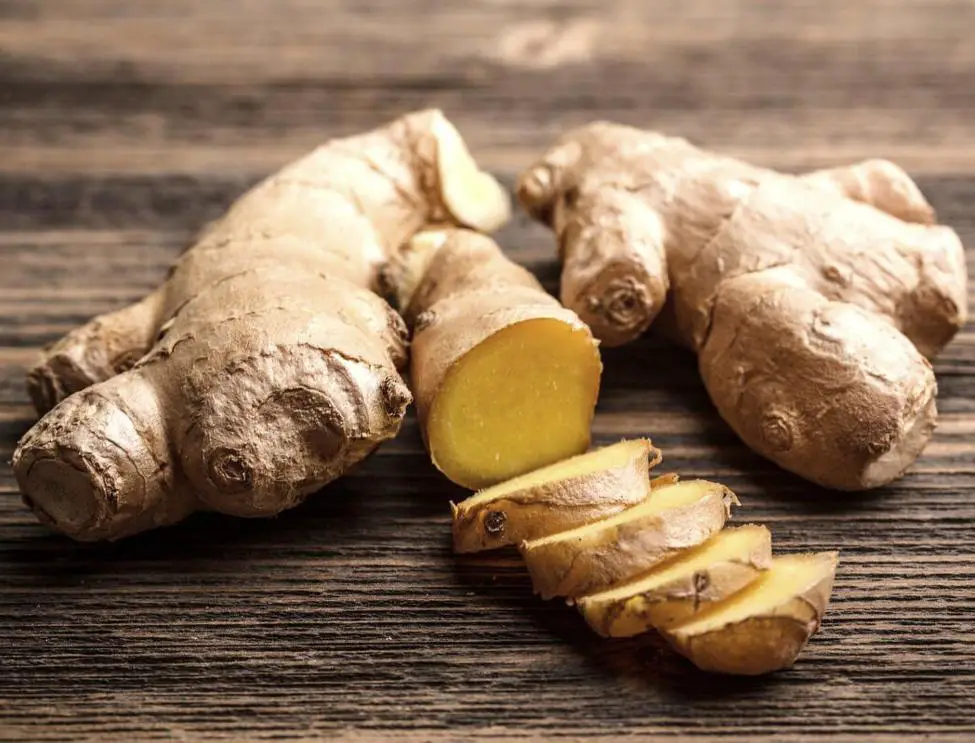Whether stomach pains or a cold, fresh ginger tea often helps get rid of annoying discomforts. It is a well-known medicinal plant.
It is believed that humans have been using ginger for many years. A Chinese source mentioning ginger dates back to the year 2800 BC. Its origin is undetermined. Today, it grows in the tropical and subtropical regions of the world, from Southeast Asia and Africa to South America. Ginger is cultivated on a large scale in India, where it is mainly needed for national consumption.
Botanically speaking, ginger is not a tuber but a rhizome. You can regrow a beautiful plant out of this rhizome.
Steps to regrow ginger
Find a good spot for the ginger
You should find a location for the pot that is not only warm but also bright so that the plant can grow properly. During summer, you could also leave the ginger plant outside. However, bring it in at night if it’s forecasted to be colder than 12℃.
Prepare the ginger for growing
You will need a piece of ginger. It doesn’t have to be in the best shape. Younger rhizomes are better suited than older ones.
Any time you purchase a piece of ginger for cooking, you’re almost guaranteed to get a piece with multiple growing tips or eyes. As with, potatoes, look for organic or untreated ginger as you shop if you want to regrow it. You can tell if a piece is good for resprouting because the eyes will have already started to grow a little bit at the store.
To prepare the ginger for growing, snap off or use a knife to cut 3cm pieces of ginger root that have “eyes” on them. Let the pieces sit for a day or two to dry out a bit before planting. This is an important step because fresh cuts are more hospitable to bacteria and fungi, which, if allowed to infiltrate, will cause the pieces of ginger to rot before they can grow. You don’t want the pieces to sit for much longer than a day or two, though, because they will completely dry out and then will not regrow as easily.
Plant the ginger
Fill a pot with the soilless mix, which is sterile and less likely to have bacteria or fungi that could cause the ginger pieces to rot.
Now you can place the ginger into the soil. Make sure you choose a large enough pot. A 15cm pot will fit three pieces of ginger. A 30cm pot will fit six to eight pieces. Plant the pieces of ginger by sticking them into the soilless mix with the eyes facing up. Cover the cut pieces with 3-5cm of soil. Space pieces 7-9cm apart. Water the mix so that it is damp but not soggy, and place the pot somewhere warm. After a good two weeks, you should start to see the first sprouts.
Harvesting and use
Three to four months after planting the rhizome, when you can see some good shoots, scratch some soil aside, expose the roots, and break off small pieces of ginger to use.
If the plant outgrows the original pot you started in, transplant it into a larger pot. Move the pot outside during summer to encourage rapid growth.
After about a year of growth, dig up the whole plant, trim off the stems and compost them, clean off the roots to keep and then restart the process all over again.
Ginger keeps in the refrigerator for about 2 to 3 weeks, though it loses flavour fast. You can store it in the freezer by peeling it and grating it into small piles of 1 or 2 tablespoons in a container. Stick the container in the freezer to let the piles freeze, then drop them into a bag and keep them in the freezer for up to 6 months.
Ginger also makes a beautiful houseplant. Especially when this rhizome begins to put its exotic blossoms on display. During winter it is normal for the plant to look wilted and as if it’s dead. It will, however, begin to flourish again the following year. It’s important that the plant doesn’t get watered during this resting period. If the rhizome piece is very small, however, water it slightly so that it doesn’t completely dry out.
Ginger, whether home-grown or purchased, can be used in a variety of ways. In the kitchen, this spicy rhizome is a flavoursome addition to soups, curries, and stews. It can also be used to make tea.
